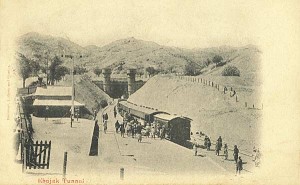Islamabad Declaration
The delegates participating in the Third Regional Economic Cooperation Conference on Afghanistan having met in Islamabad on 13 – 14 May 2009:
…NOTE THAT
Transport, Trade, Energy Cooperation, Agricultural Cooperation, Capacity Building and Education, Border Management, Health, Counter Narcotics and Refugee Return and Reintegration are areas with considerable scope for mutually beneficial regional cooperation.Connectivity: Increased trade in the region will be facilitated by affording Afghanistan easy accessibility to the Sea, developing east-west and north-south corridors on the basis of mutual agreement, and further developing infrastructure links with Afghanistan and its neighbours.
Railway connection between Iran and Herat is already on going on the basis of a grant from the Government of Islamic Republic of Iran.
An 80 km railway link from Hairatan (on the Uzbekistan border) to Mazar-e-Sharif is considered a priority route for development. The planned link forms part of CAREC’s Transport and Trade Facilitation Strategy, and is in accordance with Afghanistan’s Railways Development Programme. The project will be developed with Asian Development Bank grant support.
…
HAVE DECIDED THAT
…
4. High priority will be accorded, in terms of resource allocation and political commitment to the following set of practical short-term projects of benefit to Afghanistan and the region:
a. Concluding negotiations of the Afghanistan Pakistan Trade and Transit Agreement before the end of 2009, as agreed earlier this month in Washington, DC.
b. Extension of rail link from Chaman to Kandahar.
c. In addition, the European Commission will conduct a pre-feasibility study of railways across Afghanistan linking major destinations within Afghanistan and its neigbours.
…
Read in full on the Ministry of Foreign Affairswebsite.
(thanks to Michael G Erickson for sending me a link)
